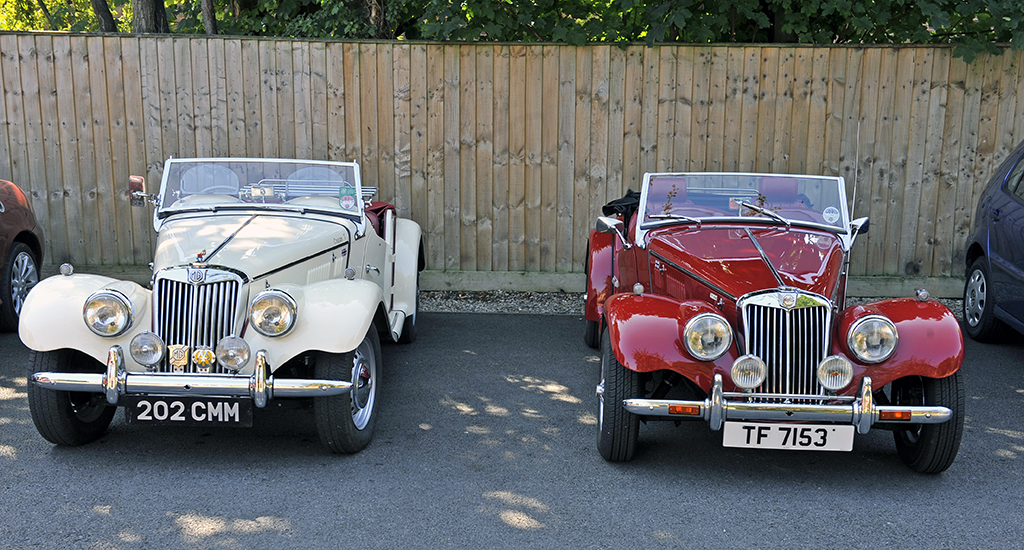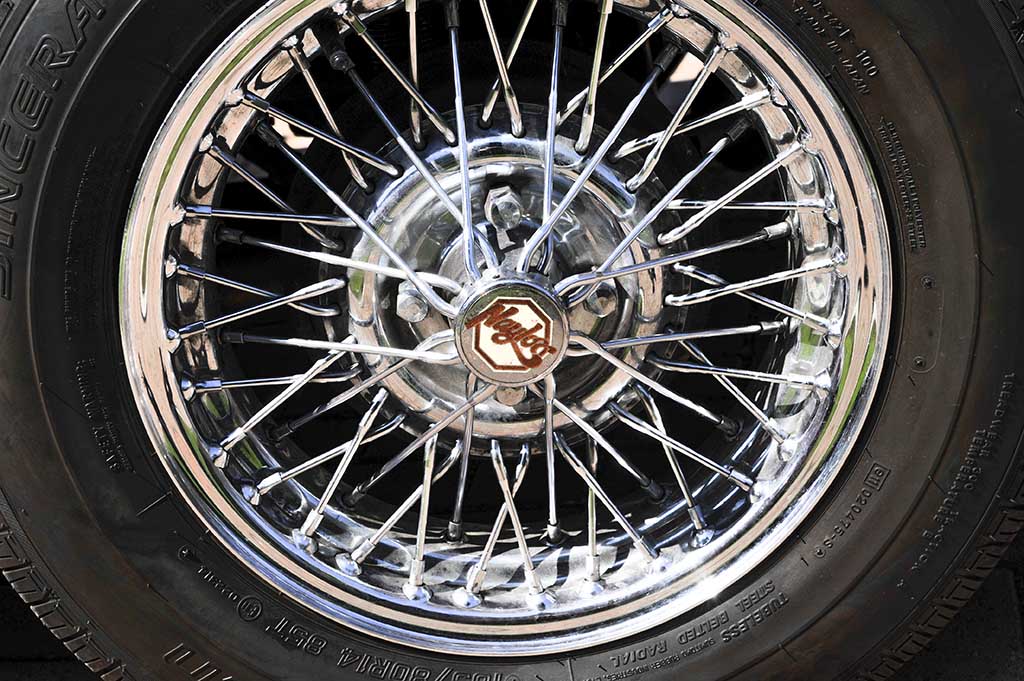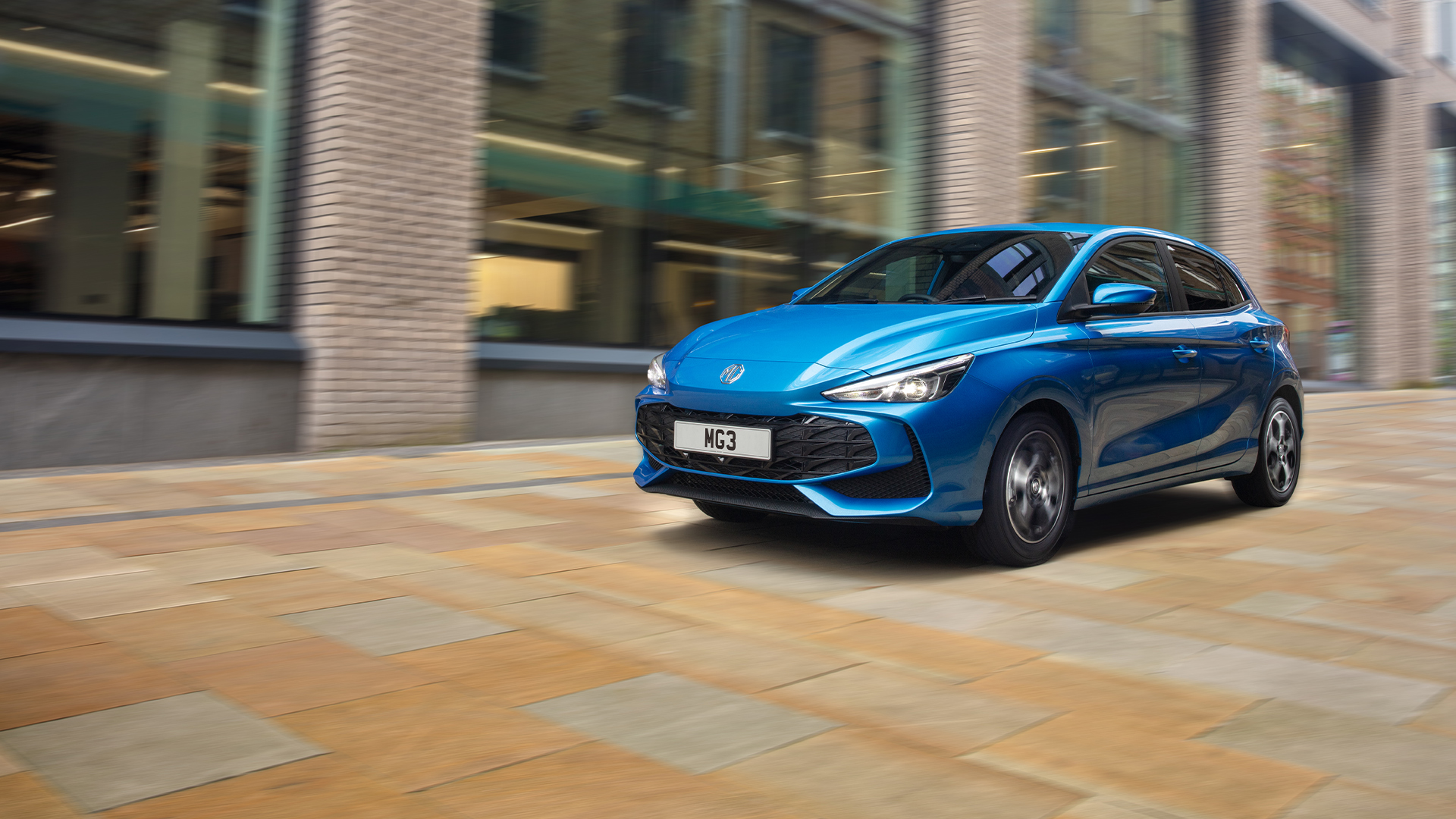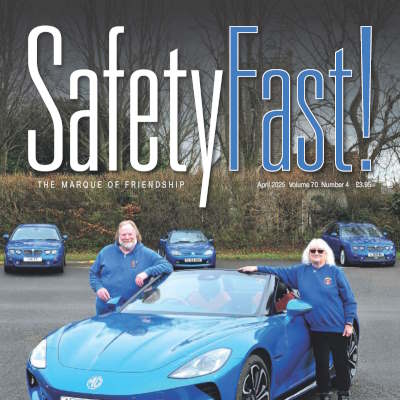Two of a Kind
Reproduction in whole or in part of any article published on this website is prohibited without written permission of The MG Car Club.
By Colin Grant
 A visit to Kimber House by Peter Ward and family friend Martin Duffin, an MGB owner, brought about in conversation the question what car do you own? A Naylor TF1700, was Peter’s reply. Now I have always been a fan of the Naylor, having been impressed with them when they were first launched in the 80s. The idea of a TF with modern running gear appealed to me so I wrote to the factory for a brochure, but alas the price was way out of my reach.
A visit to Kimber House by Peter Ward and family friend Martin Duffin, an MGB owner, brought about in conversation the question what car do you own? A Naylor TF1700, was Peter’s reply. Now I have always been a fan of the Naylor, having been impressed with them when they were first launched in the 80s. The idea of a TF with modern running gear appealed to me so I wrote to the factory for a brochure, but alas the price was way out of my reach.
The meeting with Peter prompted an idea of doing a comparison test between the Naylor TF and an original MG TF. I put the idea to Peter who immediately agreed, and I had an MG TF owner in mind who I was sure would like to take part. I contacted John Venables who owns a lovely cream coloured TF and put the idea to him. John also readily agreed and after checking that both owners could drive each other’s cars from an insurance point of view, which they could, a date was arranged.
As an introduction I thought it would be a good idea to give some background to the Naylor TF and the MG TF for those members who are not familiar with these cars.
Naylor TF 1700
An idea by Alastair Naylor to produce a ‘modern’ TF eventually started to come to fruition in 1979. With the help of his friend Allan Staniforth, it was decided from the outset that the cars should be built entirely from new parts and that the car should gain National Type Approval. Through contacts at Austin Rover Group, an agreement was sought and given to use parts from the corporate parts bins to put together a package that would comply with the National Type Approval Regulations. Also permission was sought from the Austin Rover Group and BL Heritage who consented to the use of the original designs of the MG TF and the use of its drawings. Alastair felt it was important to retain as much as possible of the original Abingdon design. Such was the enthusiasm at Austin Rover for the car that it was going to be badged an MG, but later due to a policy change the car became a Naylor.
 Many things had to change for type approval to be given over the original TF, such as the hanging of the doors which had to be hinged at the front in contemporary fashion rather than authentically at the rear; the original door handles were changed for a recessed type; indicators had to be fitted, together with a fixed front windscreen, fog lights and screen washers etc.
Many things had to change for type approval to be given over the original TF, such as the hanging of the doors which had to be hinged at the front in contemporary fashion rather than authentically at the rear; the original door handles were changed for a recessed type; indicators had to be fitted, together with a fixed front windscreen, fog lights and screen washers etc.

The main change over the original was the engine, where an ‘O’ series engine was used, together with different suspension and wheel size. There were other changes, although the most obvious visual change was the use of a polished hardwood dash with black instruments. Naylor Cars plc was formed on March 22 1984 and type approval was gained on September 24 of the same year. It was decided that the car should be subject to the MIRA 500 Mile Road Test, where issues arose with the rear hubs. This problem was eventually overcome and production started, with crews of three assigned to build each car. Their names appeared on a plate positioned next to the chassis plate under the bonnet, together with the car number and the name of the original owner. First customer cars were delivered in March 1985. The Naylor factory, which was based in Pawson Street, Bradford, by then, was officially opened by none other than Mrs Jean Kimber Cook, daughter of Cecil Kimber, founder of MG.
 Contemporary road-tests of the day reported that the Naylor TF handled surprising well, though if driven enthusiastically could induce some oversteer. Travelling at the legal limit did become tiring over long distances, but normal driving along B roads where the Naylor is really at home was reported to be a pleasurable experience. Reports of around 30mpg gave the car a range of 360 miles from its 12 gallon tank. Overall the testers gave the thumbs up to the Naylor, the only downside being the price.
Contemporary road-tests of the day reported that the Naylor TF handled surprising well, though if driven enthusiastically could induce some oversteer. Travelling at the legal limit did become tiring over long distances, but normal driving along B roads where the Naylor is really at home was reported to be a pleasurable experience. Reports of around 30mpg gave the car a range of 360 miles from its 12 gallon tank. Overall the testers gave the thumbs up to the Naylor, the only downside being the price.
 Total production of the Naylor amounted to 100 cars, its first year target being 200, before the company went into receivership in 1986. This was mainly due to the huge cost involved in getting the car into production, including type approval and the media launch costs. At this time Maurice Hutson became interested in the Naylor project and bought the company from the receivers in June 1986 for his son Mark to run alongside the work he was doing on E-Types. The company traded as Naylor Sports Cars Ltd until the Hutson Motor Company was formed in 1988. They also took over Holroyd and Hall, who produced the body tubs, moving their operation into the premises at Bradford. Apart from producing completed cars, Hutson also produced around ten cars in kit form using fibreglass moulded panels and leaving the choice of engine to the customer. They used the name Mahcon for these kit cars which came from Maurice Arthur Hutson CONstruction. Eventually Hutson moved their operation to Hartlepool and changed their name to the Hutson Sports Car Co Ltd. The last Hutson TF was produced in 1991, with a total production of 61 cars. Today Hutson supply a large quantity of original parts for the MG T series, and Naylor Brothers offer a vast range of restoration services and parts for MG owners.
Total production of the Naylor amounted to 100 cars, its first year target being 200, before the company went into receivership in 1986. This was mainly due to the huge cost involved in getting the car into production, including type approval and the media launch costs. At this time Maurice Hutson became interested in the Naylor project and bought the company from the receivers in June 1986 for his son Mark to run alongside the work he was doing on E-Types. The company traded as Naylor Sports Cars Ltd until the Hutson Motor Company was formed in 1988. They also took over Holroyd and Hall, who produced the body tubs, moving their operation into the premises at Bradford. Apart from producing completed cars, Hutson also produced around ten cars in kit form using fibreglass moulded panels and leaving the choice of engine to the customer. They used the name Mahcon for these kit cars which came from Maurice Arthur Hutson CONstruction. Eventually Hutson moved their operation to Hartlepool and changed their name to the Hutson Sports Car Co Ltd. The last Hutson TF was produced in 1991, with a total production of 61 cars. Today Hutson supply a large quantity of original parts for the MG T series, and Naylor Brothers offer a vast range of restoration services and parts for MG owners.
 On many occasions I have been informed by MG enthusiasts that the Naylor was a kit car. I would like to point out that the Naylor TF 1700 was never produced as a kit car; all cars were type approved, and sold as complete cars, with some cars being exported abroad. Hutson did indeed produce a limited number of kit cars, as stated above, but the majority were fully constructed.
On many occasions I have been informed by MG enthusiasts that the Naylor was a kit car. I would like to point out that the Naylor TF 1700 was never produced as a kit car; all cars were type approved, and sold as complete cars, with some cars being exported abroad. Hutson did indeed produce a limited number of kit cars, as stated above, but the majority were fully constructed.
MG TF
The original MG TF was launched in 1953 and was produced as stop gap before the MGA was launched, being at the time rather old fashioned compared to the Triumph and Austin Healey offerings. T Type enthusiasts at the time didn’t much like the look of the car with its low bonnet line and faired in headlamps, but today it is considered by many to be the most desirable of the T Types to own.
The car was fitted with a TD mark II XPAG engine with a raised compression ratio, larger valves with stronger springs and larger carburettors that increased the output to 57.5bhp. In mid-1954 the engine capacity was increased to 1466cc and designated the XPEG, with increased bore and compression raised to 8.3:1 giving it 63bhp. The car was then designated the TF 1500, with badges stating TF 1500 placed on the sides of the bonnet to distinguish it from the original car.
Production ended at chassis number TF10100 on April 4 1955 after 9,602 TFs had been manufactured, including two prototypes and 3,400 TF1500s. The TF was superseded by the MGA.
In part two we carry out the comparison test and get the views of their owners.

 MG Car Club
MG Car Club




